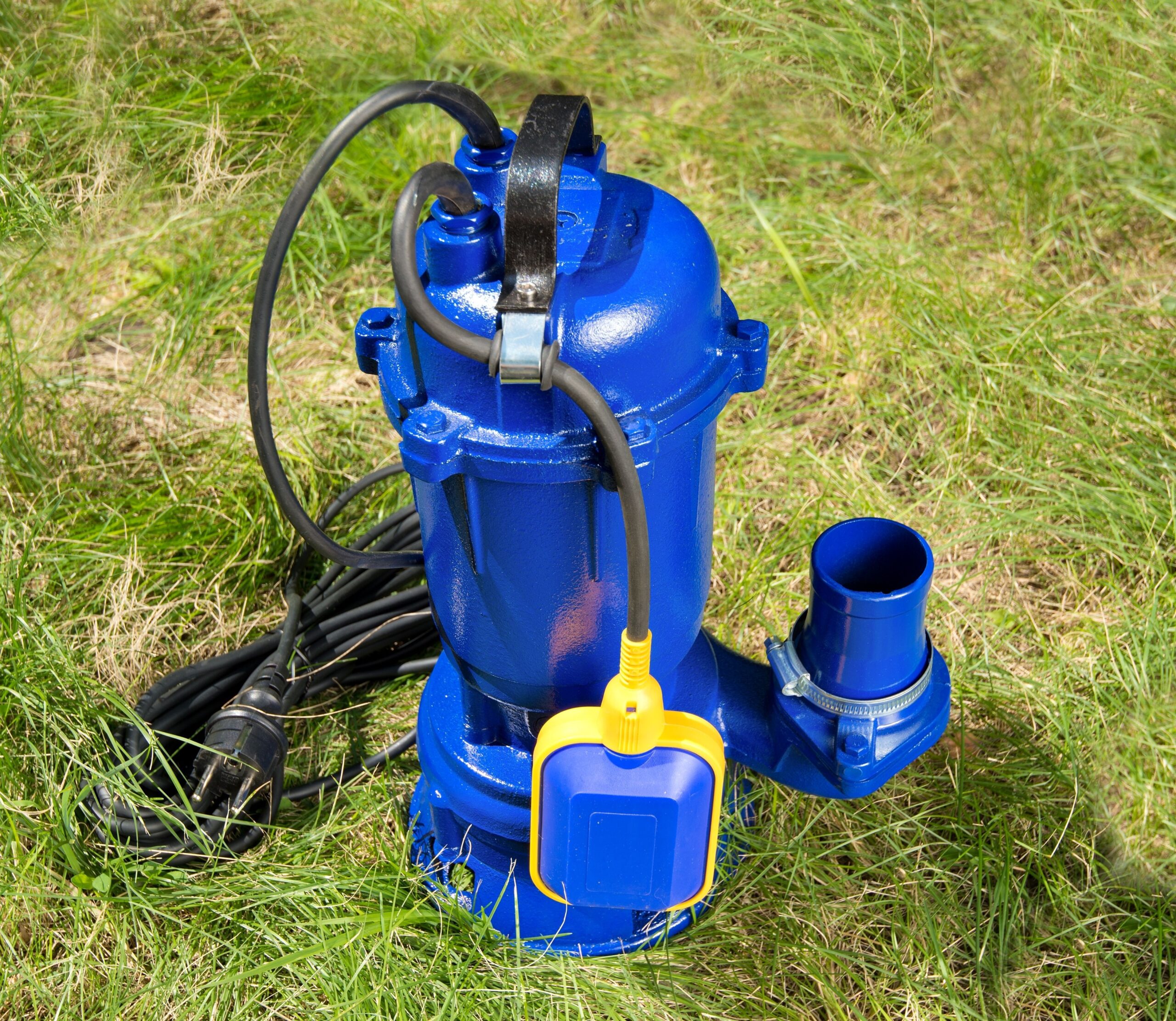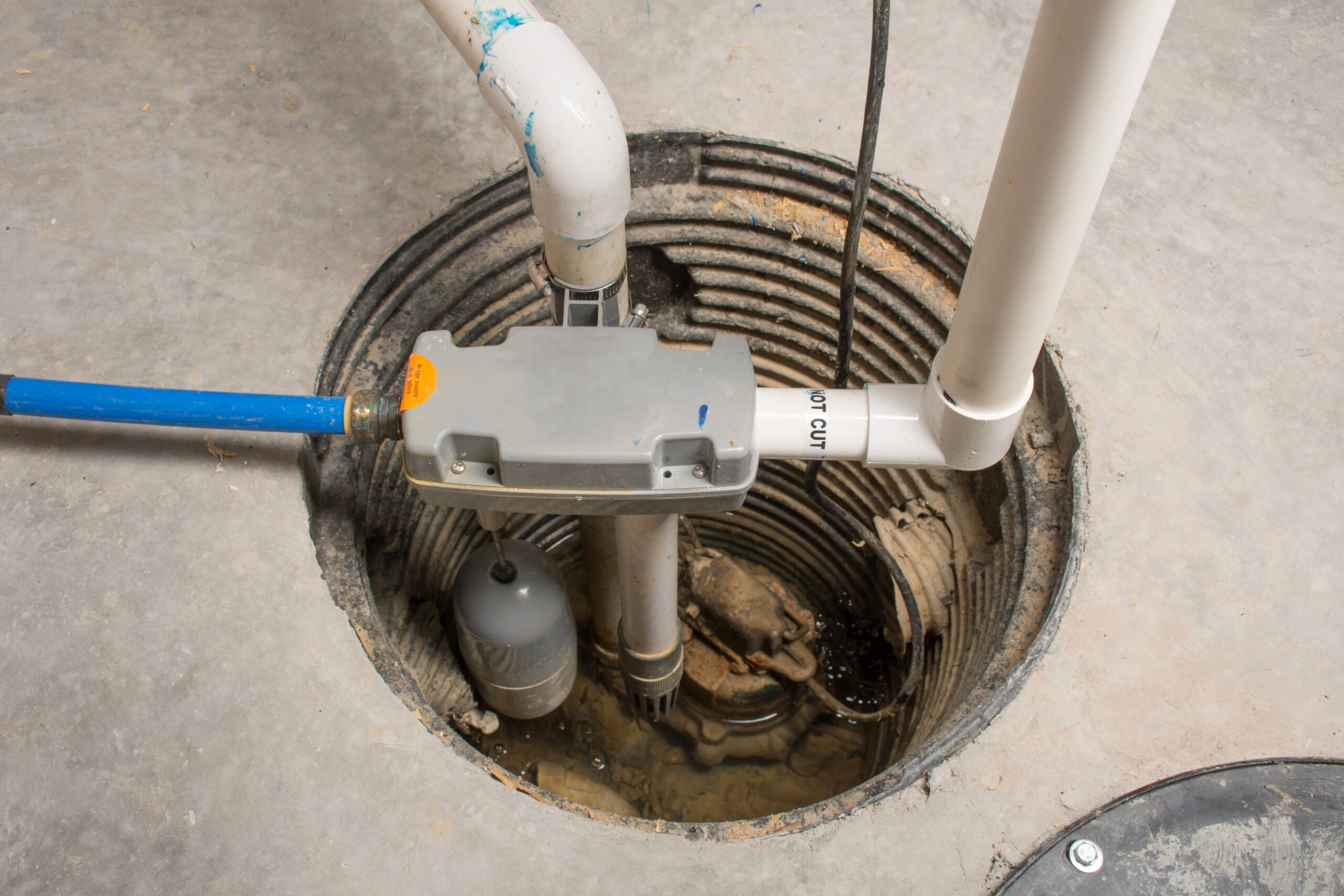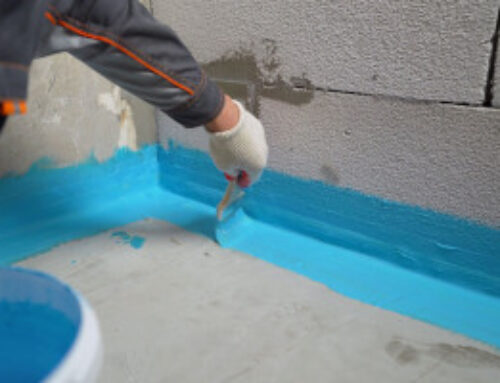Water damage is one of the most common and costly issues homeowners face. With over 60% of American homes affected by some form of basement water problems, it’s important to find a solution that lasts, such as a sump pump.
In simple terms, a sump pump is a small but powerful device that helps keep your basement dry by automatically removing excess water. But how does it work, and how do you know if you need one? You’ll find out in this in-depth guide what a sump pump is and why it matters.
What is a Sump Pump?
If you’ve ever wondered “what is a sump pump” and why it’s so important, the answer is simple: it’s your home’s first line of defense against costly water damage, mold growth, and structural issues.
A sump pump is simply a device designed to prevent basement flooding by removing excess water that accumulates in a sump pit. The sump pit is typically located in the lowest part of your basement, where water tends to accumulate due to rainfall, melting snow, or groundwater seepage.
How Does a Sump Pump Work? The Basics
A sump pump works by automatically removing water that settles in a dug pit, known as a sump basin, usually located in your basement. Its main job is keeping the area under your home dry and preventing basement flooding.
Here’s how it works step-by-step:
- Water accumulates in the sump pit through drains or natural water migration through the soil.
- A float switch inside the pit monitors the water level. When the water rises to a certain point, the float triggers the pump to turn on.
- The pump activates and quickly pushes the water out through a discharge pipe, directing it away from your home’s foundation to a safe drainage area.
- Once the pit is emptied, the pump automatically shuts off, ready for the next time water collects.
Four Types of Sump Pumps
Choosing the right sump pump depends on your home’s needs and the kind of protection you’re aiming for. Let’s look at the four main types of these pumps:
1. Submersible Pumps

Submersible sump pumps are installed inside the sump pit and are designed to operate underwater. They are quieter because the water acts as a noise barrier.
Submersible pumps are powerful and ideal for homes that experience frequent or heavy flooding.
These are used because they are sealed and are less likely to overheat or suffer mechanical damage.
2. Pedestal Pumps
Pedestal pumps have a motor that sits above the sump pit, making it easier to access for repairs or maintenance. They are generally less expensive and have a longer lifespan since the motor stays dry.
However, they can be louder than submersible models and might not handle large volumes of water as efficiently.
3. Battery Backup Pumps

A battery backup sump pump activates when the main pump fails or during a power outage. This extra layer of protection is crucial because power outages and basement flooding often happen together during storms.
Having a battery backup could be the difference between a dry basement and a costly flood cleanup.
4. Water-Powered Pumps

Water-powered sump pumps use municipal water pressure to operate instead of electricity. They’re low-maintenance and work during power outages without needing a battery.
However, they are less powerful than electric pumps and only suitable if your home has strong municipal water pressure.
Is Your Basement in Danger? Signs You Need a Sump Pump
Basement flooding isn’t always obvious at first. But, with a quick inspection and looking at the signs, you can identify if your basement is in danger of flooding.
Here are the clear warning signs that you might need to keep an eye out for to see if you need a sump pump or not:
- Frequent Basement Dampness: Even occasional puddles or damp floors mean water is finding a way into the basement.
- Visible Water Stains: Marks along the walls or floor indicate previous water intrusion.
- Cracks in Foundation Walls: Water pressure can cause small cracks to widen over time, leading to bigger flooding risks.
- Musty Odors: Persistent damp smells often signal hidden moisture, even if you don’t see standing water.
- Mold or Mildew Growth: Moist environments are perfect for mold, which can grow within 24 to 48 hours after water exposure.
- Heavy Rainfall in Your Area: If your region experiences a lot of rain, your basement is naturally at higher risk.
- Previous Flooding History: If your home or neighborhood has flooded before, it’s wise to be prepared.
You might be surprised to know that 25% of flood insurance claims come from homes outside high-risk flood areas. This means that no home is entirely safe without some protection like a sump pump.
Why Sump Pumps Are Essential for Basements
Keeping your basement dry isn’t just about comfort. It’s about protecting the value and health of your home. To help you understand more, here are the benefits of sump pumps:
1. Preventing Water Damage
A sump pump removes excess water from the basement quickly. It’s used mainly because even minor basement flooding can cause major financial setbacks for homeowners.
According to FEMA, even an inch of standing water in your basement can cause up to $25,000 in damage. This makes these battery backup pumps a smart home investment.
2. Reducing Mold Risks
Moisture is a breeding ground for white mold and mildew. Once the mold sets in, it can spread fast and cause serious health problems like respiratory issues and allergies. By keeping your basement dry, a sump pump drastically lowers the chances of dangerous mold growth.
FEMA also warns homeowners that mold can begin growing within 24 to 48 hours of water exposure. This is why it’s crucial to remove the water as quickly as possible from the basement.
3. Protecting Foundation Integrity
Water pooling around or under your home weakens the soil and the foundation itself. Over time, this can lead to cracks, settling, or major structural problems that are expensive to fix.
This is where a sump pump acts as your foundation’s best defense, moving water away before it can cause long-term damage.
Four Common Sump Pump Problems
Even the best sump pumps can fail if they aren’t properly maintained. Understanding the issues below early can save you from expensive basement repairs and waterproofing costs later.
1. Pump Won’t Turn On
When a sump pump fails to start, the most common causes are power-related. It could be a blown fuse, a tripped circuit breaker, or simply an unplugged pump.
A faulty float switch is another frequent culprit.
Impact: A non-functioning pump during a rainstorm can lead to immediate flooding, potentially causing thousands of dollars in water damage.
2. Pump Runs Continuously
If your sump pump never stops running, something’s wrong. The float switch may be stuck in the “on” position or incorrectly installed. Another reason could be that the pump is undersized for the water volume it’s trying to manage.
Impact: A constantly running pump wears out faster, shortens its lifespan, and consumes more electricity.
3. Strange Noises
Sump pumps aren’t silent, but grinding, rattling, or gurgling noises are a warning sign. It could mean that there’s debris stuck in the impeller, or the motor might be wearing down.
Impact: Ignoring strange sounds can lead to total pump failure when you need it most.
4. Pump is Not Removing Water Properly
If your pump runs but doesn’t move water, the problem usually lies in the discharge pipe or intake screen. Clogs, freezing, and blockages restrict water flow and can cause backup into your basement.
Impact: Water remaining in the pit can quickly spill into your basement.
Key Features Your Sump Pump Should Have
Here are some of the key features you should consider while choosing a sump pump:
| Feature | Why It Matters |
|---|---|
| High-Powered Motor | Moves large volumes of water quickly, preventing buildup and basement flooding during heavy storms. |
| Durable Construction | Case iron or stainless steel pumps resist corrosion and last longer than plastic ones. |
| Backup Power Source | Keeps the pump running during power outages, ensuring protection even in extreme weather. |
| Alarm System | Alerts you when the water level is too high, giving you time to act before flooding occurs. |
Sump Pump Installation Guide: How Professionals Do It
Plumbers or basement waterproofing experts know exactly how to size, install, and test sump pumps based on your home’s specific needs. First, they choose the ideal location for installing the sump pump, usually the lowest point in the basement.
They then break the concrete floor to dig a sump pit, making it deep and wide enough to house the sump basin securely. Next, the pump is installed inside the basin and connected to a discharge pipe that leads water safely outside the home.
After positioning and connecting the pump, electricians wire it safely to a GFCI-protected outlet or hardwired connection. Some installations also include battery backups or alarms for added protection during power outages.
In the end, they carefully test the system by pouring water into the pit. This ensures the pump activates, removes the water efficiently, and shuts off properly.
FAQs
Protect Your Home with Crossroads Foundation Repair
In the end, it’s all about protecting your home’s foundation, structure, and long-term value. However, understanding what is a sump pump and how it works is the first step toward preventing costly water damage and mold problems.
If your home sits in a flood-prone area or you notice early signs of moisture, acting quickly can save you thousands in repairs. That’s where Crossroads Foundation Repair comes in handy.
We specialize in safeguarding homes across Indiana with expert basement waterproofing, foundation repair, crawl space solutions, and sump pump services.
Schedule your free evaluation today!




